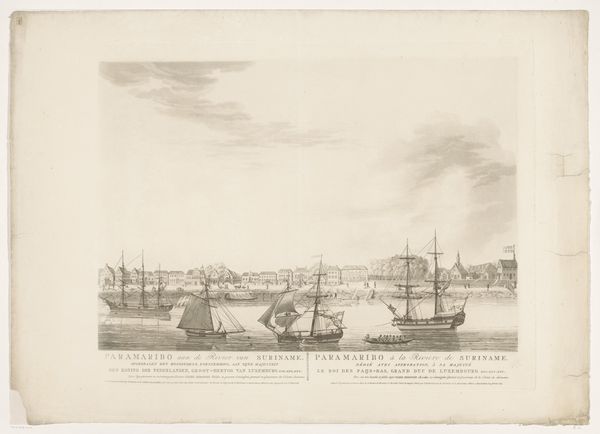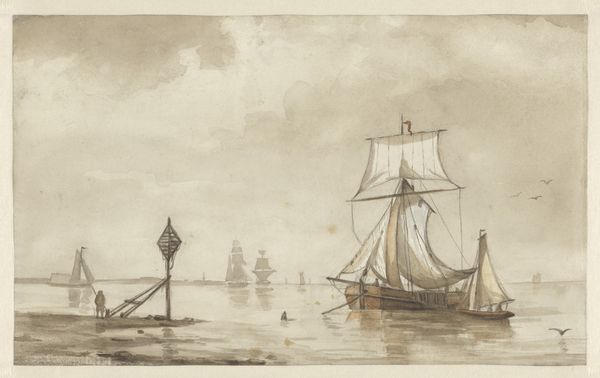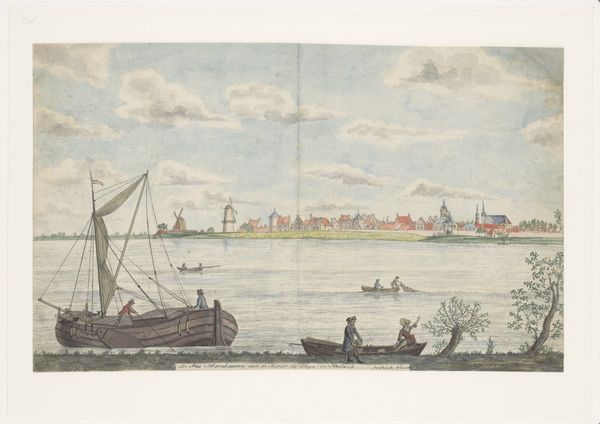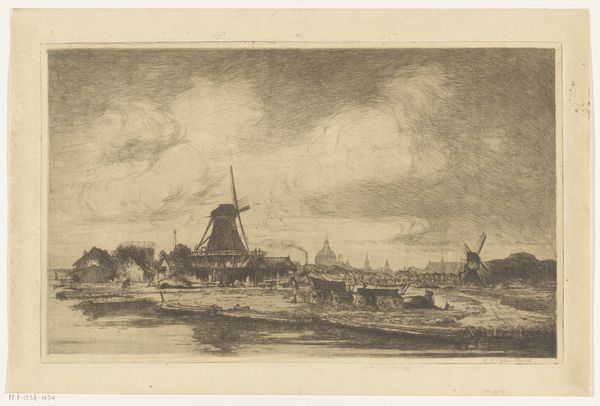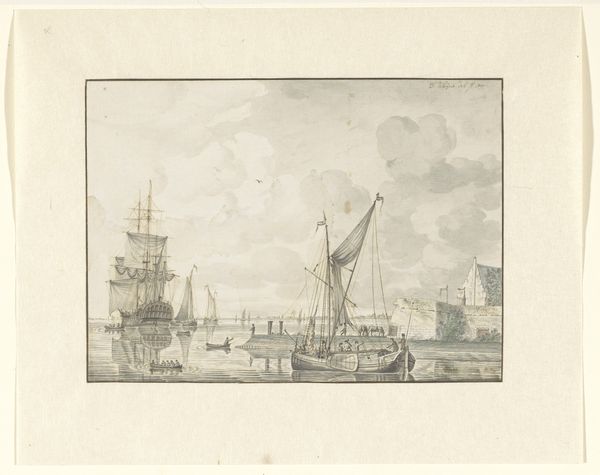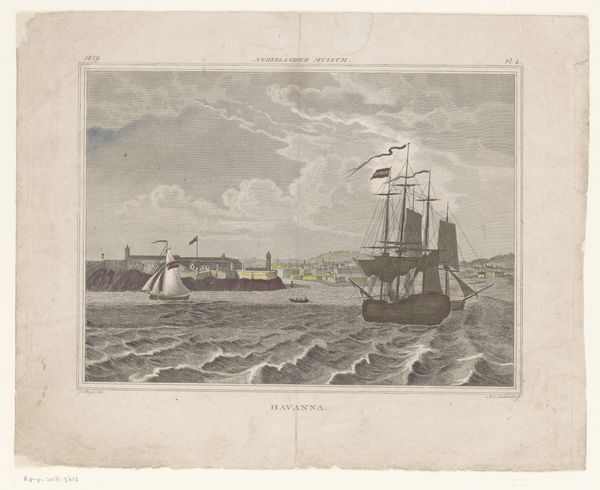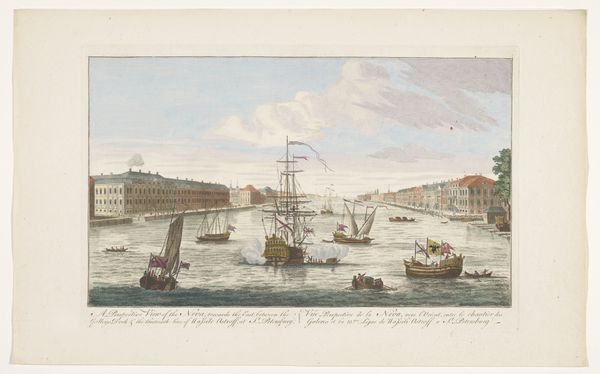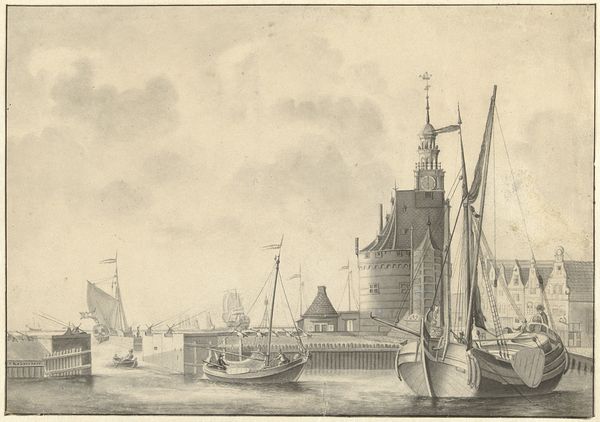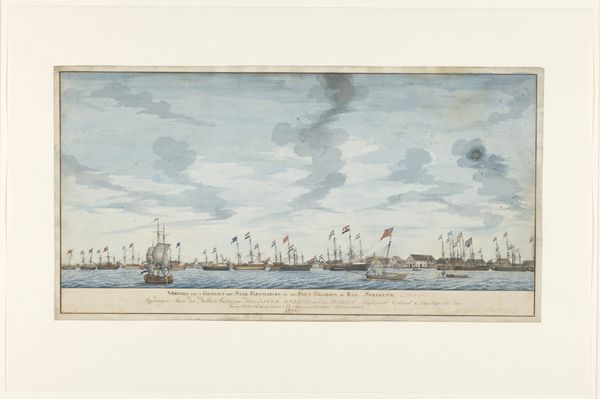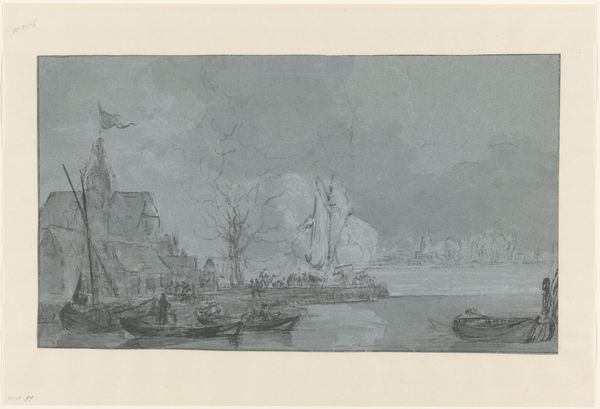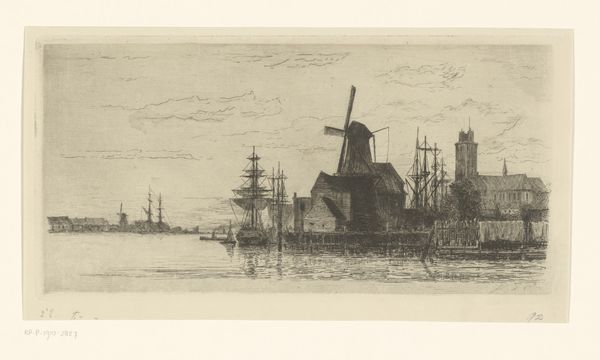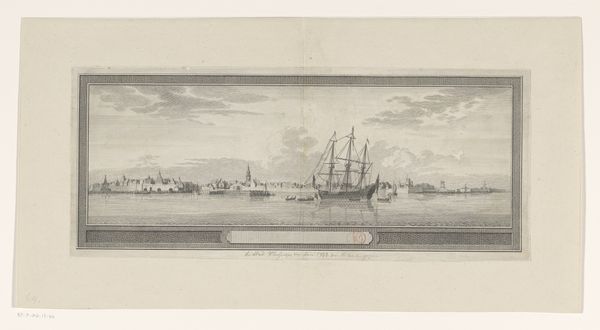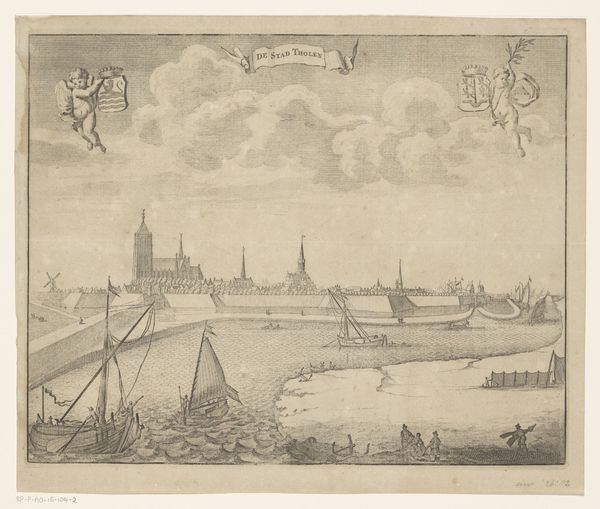
The town of Colombo in Ceylon viewed from the North in the Year 1785 from the Roads, with its Demolished Church and Tower, which were being rebuilt. Possibly 1785
0:00
0:00
Dimensions: height 255 mm, width 408 mm
Copyright: Rijks Museum: Open Domain
Curator: Well, isn't this evocative? "The town of Colombo in Ceylon viewed from the North in the Year 1785 from the Roads, with its Demolished Church and Tower, which were being rebuilt." Quite the title. Jan Brandes, possibly painted around 1785, in watercolor. What springs to mind for you? Editor: A quiet melancholy. All those greys and muted tones… it feels like a memory fading at the edges. And the water—those stylized waves are almost hypnotic, like watching time itself ripple by. Curator: The watercolor medium definitely lends to that ethereal quality. It’s also a document, of course. Brandes captures Colombo during a time of rebuilding. We see not just a cityscape, but evidence of colonial disruption. The "Demolished Church and Tower" are very telling. Editor: Right, and the Dutch flag on that impressive ship seems to say, "We're here, and we're here to stay," or at least rebuild what we broke. I wonder if Brandes, whoever he was, felt any ambivalence about being part of that scene, you know? A little like observing himself? Curator: As an employee of the Dutch East India Company, I’d argue that Brandes’ position offered him a unique lens for witnessing and documenting this landscape. The level of detail regarding infrastructure and maritime activity hints at a strategic purpose to this imagery. The Company officials likely used these visuals to demonstrate to their European audience an assertion of control of valuable maritime assets. Editor: I'm so caught up in the water's constant flow, that almost looks fake or staged, while the human elements – the city and that glorious Dutch ship – seem almost frozen in the greyscale sky. It feels like everything is held in this strange suspension of transformation. Curator: Exactly! You highlight the tension inherent in these colonial landscapes, don't you? It is all but timeless in the way it attempts to demonstrate progress within the guise of a tranquil Dutch Golden Age landscape, with a quiet affirmation that even destroyed churches are mere momentary setbacks, and now the world will see the church get rebuilt. A great propaganda piece! Editor: Propaganda! So it is about projecting strength! Curator: Precisely. In my opinion, there is hardly a Dutch artwork from this time that does not depict the glory of its "God given right to civilize and organize!" Editor: Maybe all art, and not just Golden age art, comes down to power dynamics anyway, huh? That makes you wonder, what do we actually *see* when we look at things that are presented to us so plainly, such as Jan Brandes’ colonial-era "Town of Colombo?" Well, thanks for pointing that out, it’s always more than what meets the eye, even in watercolor! Curator: Indeed. It’s about understanding what's presented to us but then also seeing who’s behind the canvas, and what structures empowered their hand.
Comments
No comments
Be the first to comment and join the conversation on the ultimate creative platform.
